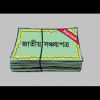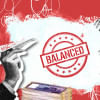To cut or not to cut?

To cut or not to cut yield on national savings schemes (NSS)—that's one headache our finance minister is unable to get rid of. Will reducing rates on national savings schemes (NSS) have a strictly positive impact on our economy? Not necessarily, unless the gains from cutting rates are complemented by other necessary reforms, namely stronger regulation and institutions, better infrastructure, efficient banks and deeper asset markets.
We all know small savers rely on savings schemes that pay higher than bank interest rates in a country where prices of basic goods and utility still rise arbitrarily. Adequate and suitable employment is few and far between while retired citizens struggle through an underdeveloped pension system.
If NSS rates are cut, central bankers claim, monetary policy transmission will improve as well as encourage investment in the stock market. Bankers will rejoice at the fact that the government will finally start borrowing a bit more from them, while the government itself is likely to incur lower interest costs on its debt. While all that sounds good, small savers will undoubtedly be hurt. But even the supposed benefits need to be better assessed.
The idea that monetary policy transmission will improve is, in theory, irrefutable. Decisions on interest rates should indeed be left only to the central bank. But the reality is, monetary policy transmission in Bangladesh will remain weak until we develop a deep and vibrant corporate bond market. It is also a key prerequisite for a strong financial sector and efficient resource allocation from savers to borrowers. We need far greater regulatory support and investor awareness, not just lower NSS yield to develop this market.
Speaking of monetary transmission, some will argue our banks will pass on policy rate changes to consumers if yields on savings schemes are reduced. Two points are worth considering here. First, with bad loans choking their frail balance sheets, the banks' responsiveness to central bank policy changes is likely to remain low. Professor Raghuram Rajan, former governor of the Reserve Bank of India, faced this very problem with the Indian banking sector. Add to that the gigantic volume of excess liquidity in our financial sector, and monetary policy transmission looks set to remain weak for the foreseeable future—give or take savings schemes. Second, with inflation already above deposit rates, how much further down do we really want deposit rates to go? What we need is the intermediation spread to go down, not to squash deposit rates in order to bring down lending rates.
No doubt bankers will be the first to put on their party hats if the government slashes rates on savings schemes. With NSS rates and hence its demand reduced, the government would have to finance more of its budget deficit with bank funding. But this implies that bank may feel less pressurised to hunt out real corporate and SME borrowers and be just happy putting their money in treasury bills and bonds.
True, if NSS yields are reduced, the government will incur lower interest payments. From there it's easy to argue that the money saved can be used for productive development purposes. Again this is one of those arguments that do not really go to the root of our fiscal challenges. At this point, banks are teeming with excess liquidity while development partners have huge resources in their pipeline. The problem lies with our government's capacity to properly spend that money. Our abysmal track record in spending our allocation for the annual development programmes should be a good pointer. So while reducing NSS rates tells the common citizens that "we are paying you less today to make more public goods available to you in the future," the reality maybe pretty different.
To be sure, economists have put forth strategies the government could undertake to financially compensate small savers. But given how long it generally takes for any fiscal initiative to be fully implemented in Bangladesh, one must ask, should NSS rates be reduced before or after such an initiative is fully operational? A retired or senior citizen certainly will not want to sacrifice money today and wait 3-5 years for a lengthy government process to become operational.
Finally, watchdogs of the country's stock market argue that high yield on NSS impedes investment in the stock market. This argument is flawed if we agree that investors recognise the difference between risk-free fixed income investment and equity investment, which comes with uncertainty. Take any random investor. Suppose his savings are divided between some equity investments and some in risk-free NSS. It's tough to believe that if NSS rates were significantly slashed, he would put the amount he had invested in NSS in stocks instead of bank deposits—even at lower rates—since he would want risk-free earning on at least a part of his income. Even more so given the general lack of confidence in our stock market, which has nothing to do with high NSS rates.
So what could be done? One option being considered lately is to offer above-market rates to small savers and market rates to institutional savers and wealthy citizens. But given our lack of automation, administrative and monitoring capacity, big investors will almost certainly find creative ways to earn the "small-saver" yield on these instruments by finding loopholes. The effort needed to monitor such malpractice (with our limited resources) may be best spent on strengthening our tax system which will reduce the need to borrow from the public in the first place!
What we need to understand is, cutting rates will not automatically shower the economy with massive benefits, nor will it create a more dynamic Bangladesh unless other big-picture reforms are put in place.
Sharjil Haque is a PhD student in economics at the University of North Carolina, and former research analyst, International Monetary Fund, Washington DC.








Comments